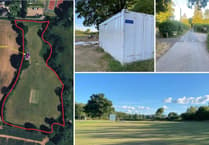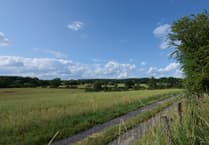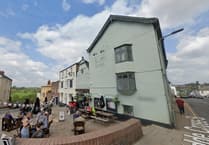A colony of lesser horseshoe bats have scuppered a developer’s appeal to build four homes on the site of an old school playground.
Colburn Homes wanted to build the houses off Old School Lane in Longhope, and appealed to the planning inspector after the Forest Council turned them down because more than 320 of the protected bats were roosting at the neighbouring Old Rectory Care Home.
The planners said it was a “critical bat roost” linked to the Wye Valley and being of Dean Bat Site Special Area of Conservation (SAC), despite permission which had since lapsed was granted 10 years ago for six new homes on the playground area.
And planning inspector James Blackwell has now backed the council’s decision to reject the scheme last January, saying: “The proposal would have a significant adverse effect on the integrity of the SAC.”
He added: “The Old Rectory Care Home, which is situated to the north-east of the appeal site, is home to a maternity roost of more than 320 lesser horseshoe bats.
“This roost is understood to help support the lesser horseshoe bat populations found within the Wye Valley and Forest of Dean Bat Site Special Area of Conservation (SAC), as they are known to exhibit a metapopulation structure which frequently switch between roosts.
“In turn, this means any development which impacts on the maternity roost near to the appeal site has the potential to adversely affect the integrity of the wider SAC.”
He noted: “Natural England considers that development of the land would have an adverse effect on the integrity of the SAC, and therefore objects to the proposal.
“It considers that the development would result in the loss of important foraging habitat, which is considered particularly detrimental to juvenile bats.
“This is because their early flights are typically short in duration, which means foraging habitat is needed in close proximity to their roost.
“NE is also concerned that flight lines would be adversely affected by lighting from the proposal, owing to the increased human activity associated with the additional housing.
“Excess lighting can risk delay to bats reaching favoured foraging habitats, which in turn can lead to bat starvation and roost abandonment.”
The developers proposed providing an alternative habitat south of the site more than double the size of the current affected area, which would include parkland, scattered trees and an orchard.
But the inspector questioned the “time it will take for the newly created habitat to mature and properly establish”.
Twenty three new homes are already being built in the grounds of the former Church of England primary school, which closed in 2003 and has already been converted into two homes itself.
The application said: “The four dwellings off School Lane form a standalone development which is effectively a rounding off of the lane…
“Given the location immediately adjacent to existing residential development and the recent approval for 23 houses on the adjacent site, it is not thought that the proposals will have any negative impact on the greater landscape as a whole, but will just be viewed as part of the village.
“The creation of a landscaped green corridor giving wildlife access to the new orchard being created on land to the south east will we believe have a positive impact both visually and ecologically.”
Ecological consultant and licensed bat surveyor Anton Kattan said on behalf of Colburn Homes’ appeal the foraging area used by bats within the site was a very small percentage of its habitat within the core zone of the Old Rectory Care Home roost.
But the inspector ruled: “I cannot be certain that the integrity of the bat colony would not be adversely impacted.”




